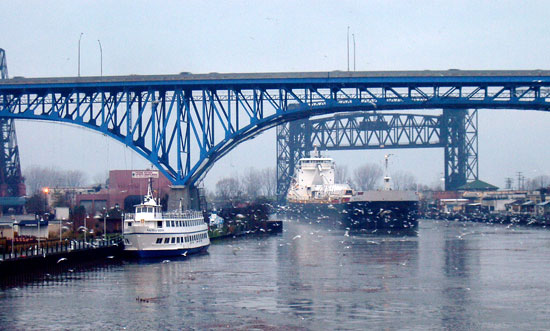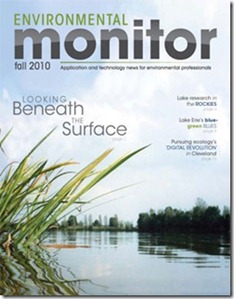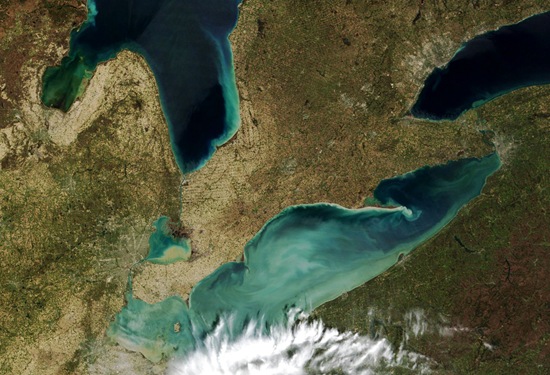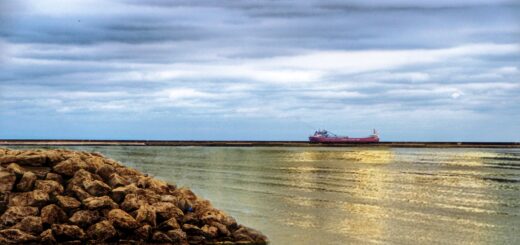Reduced toxicity of Cuyahoga sediment could save millions of dollars
0
Cuyahoga River
Most famous for catching fire and causing concern among environmentalists, the Cuyahoga River, once one of the most polluted waterways in the United States, may be getting cleaner.
Preliminary tests conducted by the U.S. Army Corps of Engineers confirmed reduced levels of toxicity in muck from the Cuyahoga — a trend that, if continued, could save millions of dollars from being spent on storing the Cuyahoga’s dredged sediment.
Sediment dredged from Cleveland’s shipping channels is stored in dikes along Lake Erie waterfronts. The existing dikes are on course to reach capacity in 2014. According to the USACE, no additional dikes can be opened until 2017.
As sediment storage space hastily shrivels, a Cleveland-Cuyahoga County Port Authority-led task force has been charged with finding new storage sites, alternative uses for the sediment, or new processes for disposing of large amounts of sludge. Without a contingency plan, dredging will eventually be halted and shipping channels to riverfront industry severely restricted.
The preliminary soil tests, conducted last November, may negate the need for new storage plans. Sediment samples from ten locations near the Arcelor-Mittal steel plant on the Cuyahoga showed “typical trace levels of urban contamination,” said Joe Kreitinger, an engineer with the Army Corps.
If similarly low levels of toxicity are revealed in the upcoming 2012 tests, it is possible the sediment dredged from the Cuyahoga River could be disposed of on land or in the open waters of Lake Erie.
To move forward with either of these disposal methods, the USACE and Cleveland-Cuyahoga County Port Authority must be granted approval from the Ohio Environmental Protection Agency.
Frank O’Connor, manager of the Army Corps’ Cleveland Harbor dredging project, said he is encouraged by November’s findings.
“Open Lake Disposal is not unrealistic,” he said.
The OEPA has already been briefed on November’s findings and has been introduced to the possibility of alternative disposal methods.
“We are aware the Corps has conducted preliminary sediment sampling and that the results show there may be potential alternatives for future disposal of dredged material…we are discussing what those options are and the associated costs,” said OEPA spokesman Mike Settles.
The results of November’s sediment tests showed low levels of heavy metals and polychlorinated biphenyls, according to Kreitinger. The traces were minor enough, however, that the soil was nontoxic to aquatic animals, such as minnows and midges, and land animals, such as earthworms. Kreitinger further explained that sediment with such minor levels of toxicity could potentially be used for commercial and industrial projects, including landscaping, habitat restoration, and capping landfills.
While open-water disposal in Lake Erie or land disposal could save millions of dollars, and save the Army Corps of Engineers and Cleveland-Cuyahoga County Port Authority much trouble, the feasibility of these disposal methods relies heavily on the findings of the 2012 sediment tests.
Until then, the rapidly shrinking dike space for sediment storage remains reality and the future of dredging on the Cuyahoga uncertain.
Cuyahoga River sediment is getting less toxic, possibly saving the region millions of dollars [The Cleveland Plain Dealer] Image Credit: http://www.flickr.com/photos/craighatfield/301134058/













